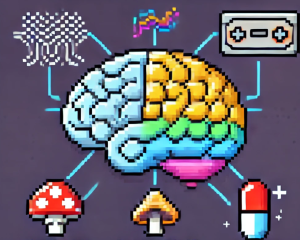
New Study Reveals 3 Big Myths About Kratom Use
A tea made from leaves. An ancient plant used for energy and pain. A trendy herbal product marketed in wellness stores and gas stations alike. Kratom means different things to different people—but for public health professionals, it may be the next frontier of both hope and harm.
With more than two million users in the U.S. and a growing reputation as a natural pain reliever or opioid substitute, kratom is no longer niche. It’s mainstream. Yet, as this sweeping new review shows, we still know remarkably little about how kratom works, who benefits, who’s at risk—and what happens when it’s mixed with modern medicine.
Let’s break it down.
A Leaf with a Legacy—and a Twist
Kratom, or Mitragyna speciosa, has long been used in Southeast Asia to fight fatigue, relieve pain, and ease withdrawal from opium. Workers would chew the leaves or brew tea. But today’s kratom looks very different. Sold as pills, powders, extracts, and even candy-coated chews, it’s often consumed in much higher doses than traditional preparations.
The plant’s primary active ingredient—mitragynine—acts on the body’s opioid, serotonin, and adrenergic systems. In other words: it doesn’t behave like a typical drug. It behaves like several.
And it’s not alone. Kratom leaves contain over 40 different alkaloids. Yet most clinical knowledge centers on just one or two.
Kratom’s “Pharma Cocktail”: More Than Just Mitragynine
If mitragynine is kratom’s headline act, then 7-hydroxymitragynine is its potent understudy. This compound may pack the biggest punch when it comes to pain relief—but also appears to increase the risk of respiratory depression at higher doses, like traditional opioids.
But here’s the kicker: kratom’s effects aren’t limited to these two chemicals.
Other alkaloids in the mix—speciociliatine, paynantheine, and corynantheidine—have their own targets. Some behave like weak opioids. Others act more like antidepressants or blood pressure meds. Together, they create a polypharmacy in a plant, and we’re just beginning to map the consequences.
The upshot? People who take kratom may feel pain relief, stimulation, euphoria—or none of the above—depending on the dose, preparation, and their own biology.
A Double-Edged Sword for Substance Use
One of kratom’s most discussed uses is as a tool for managing opioid withdrawal. And many users say it works. Survey data from people with substance use histories suggest kratom helps reduce cravings, manage pain, and improve mood. Some even report using it to taper off heroin or fentanyl.
But here’s the challenge: anecdote isn’t evidence. There are almost no randomized controlled trials testing kratom’s effectiveness in treating opioid or other substance use disorders. And self-report surveys, while valuable, can’t untangle cause and effect.
What’s more, regular use at high doses has been linked to kratom use disorder (KUD)—a condition with symptoms like tolerance, withdrawal, and compulsive use. While most reported cases are mild, that doesn’t mean they’re harmless.
As one researcher put it: “Kratom may reduce the harms of opioids—but it may come with its own.”
The Hidden Danger: Drug Interactions
Kratom doesn’t just act like a drug. It can interact with drugs—especially those metabolized by the liver enzymes CYP3A4 and CYP2D6. These include common medications like antidepressants, blood pressure drugs, and even over-the-counter cough syrup.
In one study, even a low 2g dose of kratom tea increased the blood levels of another drug by 50%. That means kratom could unintentionally amplify or block the effects of other prescriptions, especially in people taking multiple medications.
This makes kratom a wild card in clinical settings. If a patient doesn’t disclose kratom use—and many don’t—providers may misdiagnose symptoms or miscalculate drug effects.
Beyond the Headlines: What Clinicians Should Know
So what does all this mean for public health, addiction medicine, and clinical care?
- Ask about kratom. It’s legal, unregulated, and increasingly common. Include it in intake questions, especially for patients with chronic pain or substance use histories.
- Educate patients without judgment. Many turn to kratom because they feel let down by the healthcare system. Acknowledge their experience while explaining the unknowns.
- Watch for interactions. Kratom’s effect on liver enzymes means it can alter how other drugs work—sometimes dangerously.
- Advocate for research. The lack of FDA regulation, standardized dosing, and controlled trials is a public health problem. Kratom isn’t going away. It’s time policy and research caught up.
What’s Next for Kratom Research?
There’s promise here—but plenty of peril. Kratom could hold clues to safer pain relief, novel addiction treatments, or even mental health support. But those hopes rest on rigorous research, not hype or hearsay.
Until then, we need to approach kratom with curiosity, caution, and compassion. It may not be the plant panacea some claim—but it’s also not the villain some fear.
We’re still writing the story of kratom. Let’s make sure it’s evidence-based.
Join the Conversation:
- Have you encountered kratom use in your clinical or community work?
- What do you think is the most urgent question researchers should answer about kratom?
- Should kratom be regulated like cannabis—or like opioids?
Don’t Wait – Stay Informed, Drive Change!
Public health needs your voice today. Join thousands of leaders making a difference by subscribing to This Week in Public Health. Get powerful updates and tools to create impact.
🔥 Every second counts! Share this blog now to expand our reach and strengthen our movement.



